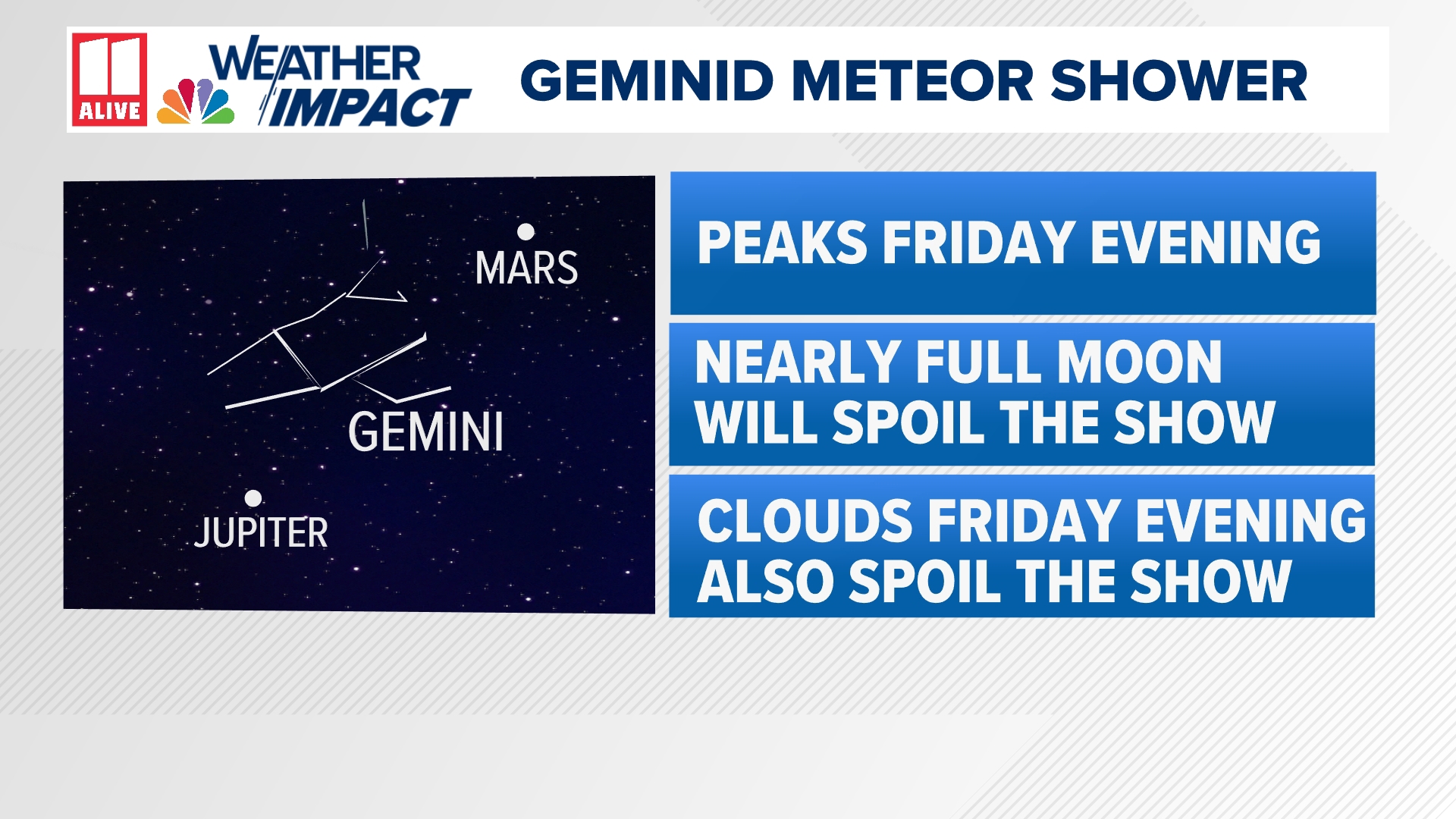ATLANTA — The Geminid Meteor Shower peaks this Friday evening, December 13th.
This is often the last big meteor shower of the year, and in the best circumstances, it can give skygazers a glimpse of up to 120 meteors per hour, according to NASA.
But this year, a couple of different facets will 'spoil the show' in north Georgia.
First, the moon. The full 'cold moon' is Sunday, December 15th. With the waxing gibbous around 96% illuminated on Friday, there will be a lot of light pollution, making viewing the Geminids far from ideal. The moonrise time on Friday is 3:50 p.m., and the Moonset is the next morning at 6:56 a.m.
Second, cloud cover. Here in north Georgia, we expect a partly cloudy sky Friday evening, which will also block your vantage point of the night sky.
In conclusion, this year's peak of the Geminids will be far from a good year. You may have a little more luck Wednesday night or Thursday night when the skies are clear, and the moon isn't quite as illuminated. But do not expect to see 100+ meteors per hour.


The Geminids are known as being fast and bright meteors, often yellow in color, according to NASA. They are unique from many other meteor showers because where the meteors originate from is an asteroid, not a comet. The Geminds originate from the asteroid 3200 Phaethon.
To view the Geminids, go after 9 or 10 p.m. and avoid light pollution and city lights. Give your eyes at least 30 minutes to adjust. Then, look up for the radiant point, the constellation Gemini.
The Geminid Meteor Shower will remain active through Christmas.

